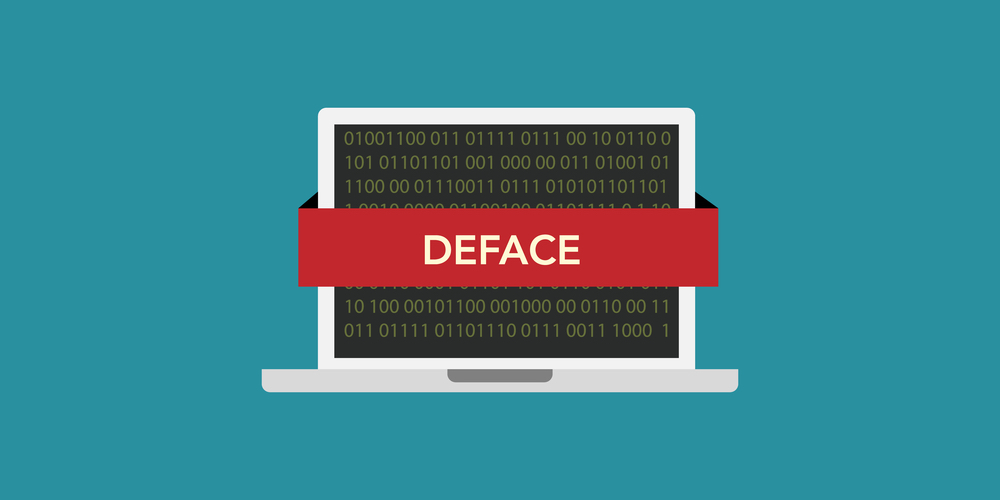Blog
Domain Reputation API: Stop Defacers from Harming Your Brand

Your website is your business’s online front door. It’s the first place people would go to for information on your brand and products or services. Anyone and everyone who’s interested in working with you or purchasing your offerings is sure to come knocking on your door, and the best thing you can do is to keep it open if you want your company to flourish.
Keeping your website up and running should thus be one of your utmost priorities. To avoid having your brand raked in the mud, make sure it’s always updated, uncompromised, and as invulnerable to online attacks as possible. You don’t want to make cybercriminals or anyone with malicious intent feel welcome in your place of business.
One way to do that is by using Domain Reputation API, a tool that evaluates your domain’s reputation by means of a wide range of security data sources via a dynamic external configuration audit. Constantly check up on your domain’s safety to keep threats at bay. Find out why and how in this article.
What You Don’t Know Can Harm You
Malware-based attacks on company websites are no longer uncommon. Day after day, headlines are filled with stories on organizations suffering from ransomware, DDoS, cryptojacking, and other cyber attacks. And though they don’t make news, thousands of websites are brought down by hackers each day, disrupting businesses worldwide. Often overlooked among these disruptions are those caused by web defacement attacks. Most people probably thought these went out of style and are therefore no longer worth protecting against. But did you know that web defacement (typically associated with hacktivism) could just be the first step in launching a more damaging cyber attack? Here’s just a list of possible scenarios that could change your mind about the threat:
- Hacktivist supporters of the Wikileaks founder Julian Assange from various parts of the globe teamed up within 24 hours of his arrest in April and managed to bring down 39 Ecuadorian government-owned websites. Many of these were defaced, knocking the organizations’ portals offline.
- The notorious hacktivist group Anonymous launched a spate of defacement attacks against Israeli government-owned websites in March, successfully affecting dozens of organizations in the country.
- The so-called “Syrian Revolution Soldiers (SRS)” defaced the Rafic Hariri Airport and many other Lebanese government-owned websites to showcase their political manifestos in January.
- Also in January, hackers demanded that Transdev Ireland, the company operating Dublin’s tram system, pay them a ransom of 3,300 euros in Bitcoin after defacing their website.
Typical defacement victims include government and religious organizations but are not limited to them. Any insufficiently secured domain can easily be hacked and manipulated by not only hacktivists, but also anyone who has a beef with its owner. Other potential threat sources include:
- An unscrupulous competitor who won’t stop at anything just to get ahead;
- A disgruntled former employee who thinks he was unjustly fired;
- A disgruntled employee who disagrees with his organization;
- A cybercriminal who has bigger plans but needs to know first just how vulnerable your network infrastructure is;
- An unsatisfied customer who felt your company wronged him.
Anyone who has enough technical skill and know-how and has had a bad experience with your company can launch an attack on your domain. That’s why it’s important to always maintain its health and safety because the ramifications (some of which are listed below) can be disastrous:
- Business disruption: When your website gets vandalized, everything that needs to be put back in place will require time and effort that would normally be used for regular tasks. That would mean paying staff overtime so they can still finish their work when they need to spend a lot of their day cleaning up after vandals. Some defacements may be too disturbing for your clientele and you may consequentlyhave to take down your site for cleanup, resulting in lost opportunities and sales.
- Reputation damage: A defaced website could influence the way people perceive your ability to secure your network and systems. If your company stores and processes a lot of personal data, current and potential customers may think twice before trusting you again.
- Potential data breach: Not all defacements are plain acts of vandalism. Because their effects are easily seen, some attackers can use them as a diversion. While you focus on setting your site to rights, they may be carrying out more sinister activities. For instance, they could be stealing sensitive information from your customers after installing a keylogger on your site. Or they could be redirecting them to their own specially crafted phishing sites. Or worse, they could have already taken confidential information from your network and the defaced site is now just a souvenir. In such a case, you’re not only left with cleanup duties, you may also need to face customer complaints or even be liable to facing charges against recently implemented and stricter data privacy regulations such as the GDPR.
You don’t need to deal with these challenges. Just make sure your reputation remains intact with Domain Reputation API. Read on to find out how.

Don’t Let Digital Vandals Harm Your Brand
In a world where cybercriminal tools and tactics are constantly upgraded, you can keep up by using the latest that technology has to offer. Domain Reputation API can help you not just clean up your act after the incident, it can do better than that. It will allow you to avoid becoming the next defacement victim.
Typical web defacement attacks begin with hackers looking for ways into your domain infrastructure, which include:
- Exploiting vulnerabilities in the software or applications that run on your infrastructure: The most abused OSs include Linux, Windows 2003, and Windows 2008, while Apache, IIS/6.0, and IIS/5.0 made the list of most exploited web servers.
- Planting a data-stealing malware in your network to get access: In this scenario, the malware sends stolen credentials to hackers, which they then use to obtain unhindered access to your network’s backend, allowing them to perform even more nefarious deeds.
- Bypassing routers and firewalls: Leaving routers unprotected is a bad idea. So is using weak passwords or leaving default ones in any of your Internet-facing hardware. These can be easily hacked, letting bad guys in through your domain’s back door, so to speak.
- Infiltrating third parties with access to your network: It is common business practice to give suppliers and other partners access to your network to speed up transactions. What should be avoided, however, is to give them administrative access to your infrastructure. No matter how trustworthy they are, that doesn’t guarantee that they won’t be compromised by cyber attackers as well. If their walls fall, so may yours.
- Seeking the help of an insider: Trust should not be given freely. Disgruntled employees (both former and current) are likely allies of scheming competitors or threat actors for a variety of reasons. Some may be hoping to steal intellectual property to put up their own business, others may not be supportive of their company’s political or religious leanings, while still others may just want to get even. Anyone who has a beef with your organization can be coaxed into working against you. In fact, reports say more than 40 percent of data breaches are caused by insiders.
When faced with all these challenges, what can your organization do against defacement and other Web threats? The answer is simple: maintain a risk- and threat-free virtual real estate with Domain Reputation API.
How Domain Reputation API Can Keep Your Business Risk-Free
Backed by a huge database of domain records, Domain Reputation API can check your domain’s name security posture by evaluating it according to more than 120 parameters to compute its reputation score based on:
- Your website’s content, relationships with other domains, and host configuration;
- Your SSL certificates, connections, and configuration;
- How dangerous your domain is by cross-checking it against malware data feeds;
- Your domain’s WHOIS record;
- Your DNS MX records’ configuration and corresponding mail servers;
- Your name servers’ configuration;
- Your IP address infrastructure via a reverse IP address lookup.
Apart from obtaining your domain’s overall reputation score that ranges from 0 (dangerous) to 100 (safe), Domain Reputation API also provides you with warnings on potential signs of weakness that you need to address in an easy-to-read format. Keep in mind that your customers’ and stakeholders’ trust in your company may largely depends on how secure your domain infrastructure is against all kinds of digital threats.
Take a step further, run a domain reputation check on IP addresses that often access your site as well. Make sure they’re coming from credible and non-malicious sources. Stop those with malicious ties (invalid SSL certificates and configurations, suspicious-looking WHOIS records, known malware vectors, etc.) from breaching your network and systems. This will help you keep cybercriminals and attackers out of your domain before they can disrupt your business, drag your brand in the mud, or cause irreparable damage to your company by losing confidential data, paying fines, causing public humiliation, etc.
You don’t have to wait for disasters to strike before ensuring your entire domain’s security. It doesn’t help that there’s a thriving underground market for web defacement service offerings on the Deep Web. Remember that your business can only succeed if your brand’s reputation remains intact despite the numerous threats and cyber attackers lurking on every dark corner of the Internet. It’s never too early to take a proactive stance to online safety, but it could be too late. Your brand is your business and the only way you can keep your head held high is by knowing that your domain is threat-free. Stay within the “safe” zone with the help of Domain Reputation API.
For more information on how the product works and how to avail yourself of it, visit Theat Intelligence Platform’s Domain Reputation API page.
Read other articlesHave questions?
We work hard to improve our services for you. As part of that, we welcome your feedback, questions and suggestions. Please let us know your thoughts and feelings, and any way in which you think we can improve our product.
For a quick response, please select the request type that best suits your needs.
Threat Intelligence Platform uses cookies to provide you with the best user experience on our website. They also help us understand how our site is being used. Find out more here. By continuing to use our site you consent to the use of cookies.